
Human security means safety from chronic threats such as hunger, disease, and repression as well as protection from sudden and harmful disruptions in the patterns of daily life – whether in homes, jobs or communities.
Climate change is increasingly impacting human security around the globe.
Unpredictable rainfall and extreme weather events can trigger competition for food and water; declining agricultural output can lead to a loss of income for a broad segment of the population; droughts, floods, storms and sea-level rise are already causing more than 20 million people to leave their homes and move to other areas in their countries each year.
Climate change is often called a threat multiplier as it intensifies resource scarcity and worsens existing social, economic and environmental factors.
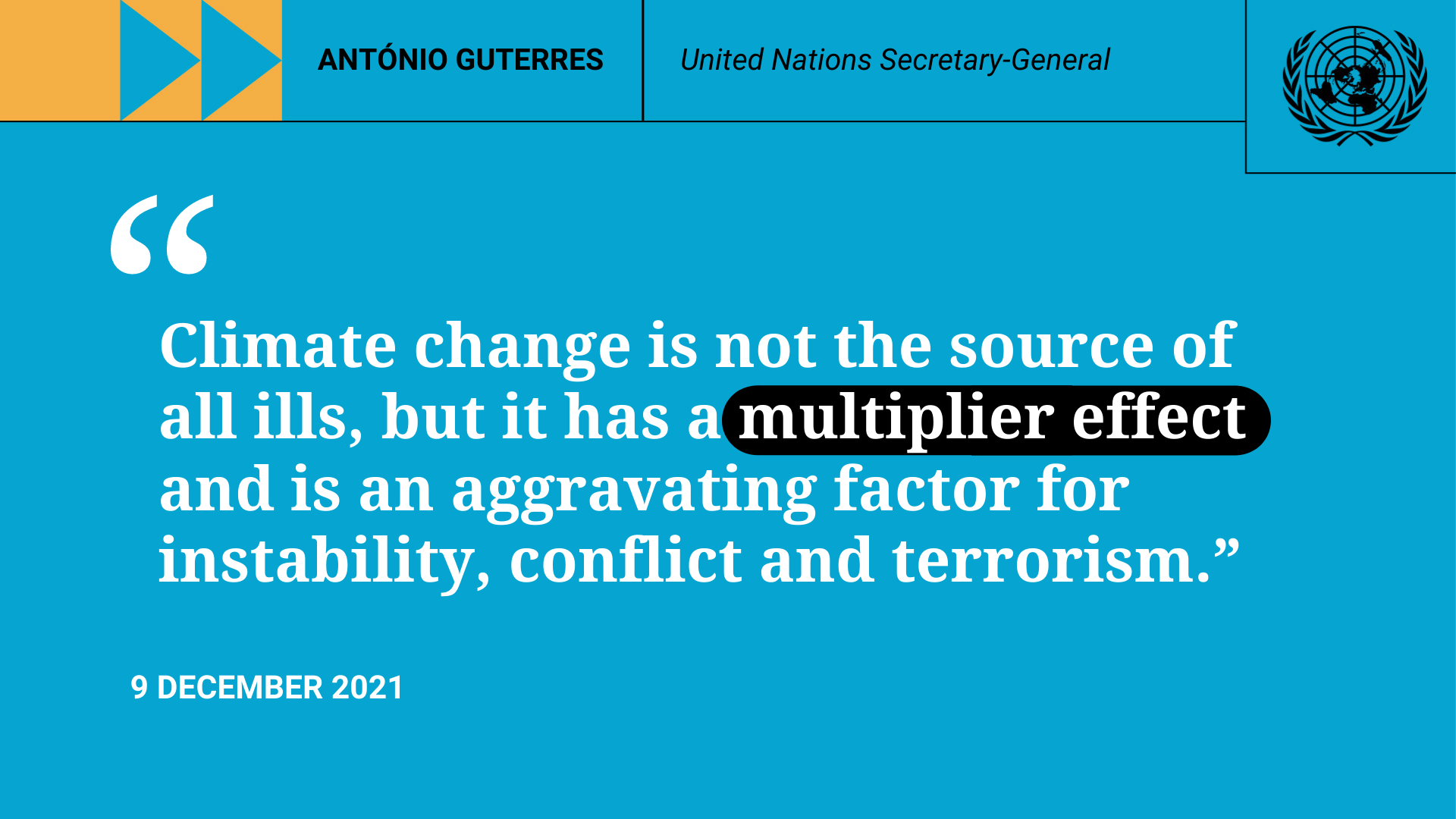
And many of the countries that are the most vulnerable to the effects of climate change already are among the most politically and economically fragile. Yemen, Mali, Afghanistan, Democratic Republic of the Congo and Somalia, all of which are dealing with conflict, are also ranked among the most vulnerable to climate change.
Here are five ways climate change is impacting human security:
1. Climate change intensifies competition over land and water
As the planet warms, longer and more intense droughts are leading to soil erosion, dried-up grazing lands, and reduced crop yields. Floods and landslides are destroying agricultural lands and infrastructure. Water resources are getting increasingly scarce.
Diminishing arable land and unpredictable water sources have exacerbated tensions between farming and herding communities in many places, including central Mali. In the arid north of the country, the cumulative effects of more frequent droughts, increasingly unpredictable rainfall, and widespread desertification have undermined the capacity of communities to plan and to sustain their livelihoods.
In Somalia, years of conflict have ravaged the resilience of the State and communities. The current drought, the worst in four decades, compounds vulnerabilities and contributes to displacement, hunger and grievance.
In Iraq, water scarcity, rising temperatures and dust storms put heightened pressure on intercommunal relations.
Increased water stress (when demand for safe water exceeds supply) can cause social unrest and spark conflicts over the need for freshwater, agriculture, aquaculture, and hydropower, especially around transboundary water supplies -- water from aquifers and lake and river basins shared by two or more countries.

In Jordan, one of the most water-scarce countries in the world, the Jordan Water Sector Efficiency Project aims to strengthen the country’s water supply infrastructure and ability to deal with drought. An estimated 1.6 million people are expected to benefit from improved water services, including many refugees, particularly from Syria.
In Africa’s Sahel region, where livelihoods have been threatened by rapidly rising temperatures, droughts and floods, a Great Green Wall of vegetation to counter desertification has restored almost 18 million hectares of degraded land and is aiming to restore 100 million hectares, sequester 250 million tonnes of carbon, and create 10 million jobs by 2030.
Learn more about the connection between climate change and water and climate change and land.
2. Climate change affects food production and drives up hunger
When climate disasters damage farmland and threaten coastal fisheries, food production suffers. Higher food prices and hunger, combined with existing inequalities and political and social exclusion, can lead to unrest.
In the Horn of Africa, swarms of locusts, bolstered by the rapidly changing temperatures, have decimated crops and driven food prices sky high. In the Pacific Islands, coastal erosion, increased temperatures and sea level rise have threatened coral reefs and coastal fisheries, increasing tensions over diminished food supplies.
As many as 783 million people are facing chronic hunger today. A global temperature increase of 2°C would push an additional 189 million people into hunger. With an increase of 4°C, this figure could rise to a staggering 1.8 billion.
In Afghanistan, where at least 18.8 million people face food insecurity and 80 per cent of livelihoods depend on agriculture, the Climate Risk & Early Warning Systems initiative enables earlier drought detection to increase safety and preparedness. Alongside the Central Asia Flood Early Warning System, reaching 40 million Afghans, these efforts have helped protect local agriculture and improve food security.
3. Climate change forces people to move
As global carbon emissions continue to climb, the impacts of climate change are increasingly displacing people around the world. From catastrophic flooding in Pakistan and the Democratic Republic of the Congo, to relentless drought in Afghanistan, Madagascar and the Horn of Africa, millions have recently been displaced.
Each year, more than 20 million people are currently forced to leave their homes and move to other areas in their countries due to hazards resulting from extreme weather events, such as abnormally heavy rainfall, prolonged droughts, desertification, environmental degradation, sea-level rise and cyclones.

Most of the displaced people are hosted in developing countries, which themselves are often affected by a lethal mix of conflict, poverty, food insecurity and the climate emergency. Safe and sustainable solutions for displaced people are becoming harder to achieve as climate change adds to degraded and dangerous conditions in areas of origin and refuge.
An extreme example is the Pacific Island country of Tuvalu, where the sea level has been quietly creeping upwards for years, threatening to sink the nation and pushing Tuvaluans to leave their home country. If no action is taken, 95 per cent of land is projected to be flooded by 2100. The government is now creating areas of new, raised land designed to remain well above sea levels in 2100.
Get the facts about the climate crisis and displacement.
4. Climate change increases poverty and inequalities
Climate change disproportionately affects the poorest and most vulnerable.
In the poorest countries, a large part of the population depends directly on activities that are the most affected by climate change, notably, agriculture, forestry, and fishery. People with the lowest incomes are the most likely to depend on resources provided by nature.
By hitting the poorest the hardest, climate change increases existing economic inequalities and causes more people to fall into poverty. A World Bank report estimated that an additional 68 to 135 million people could be pushed into poverty by 2030 because of climate change.
In addition, donors are often less likely to invest in highly unstable regions, creating a cycle of inequity and widening the gap.
The UN Secretary-General has called for an SDG stimulus package of at least $500 billion per year to address the unfair global financial system by tackling the high cost of debt and rising risks of debt distress, massively scaling up affordable long-term financing for development, and expanding contingency financing to countries in need.
5. Climate change increases security risks for women and girls
Pre-existing inequalities, gender-related roles and expectations, and unequal access to resources can leave women and girls disproportionately vulnerable at the intersection of conflict and the climate crisis.
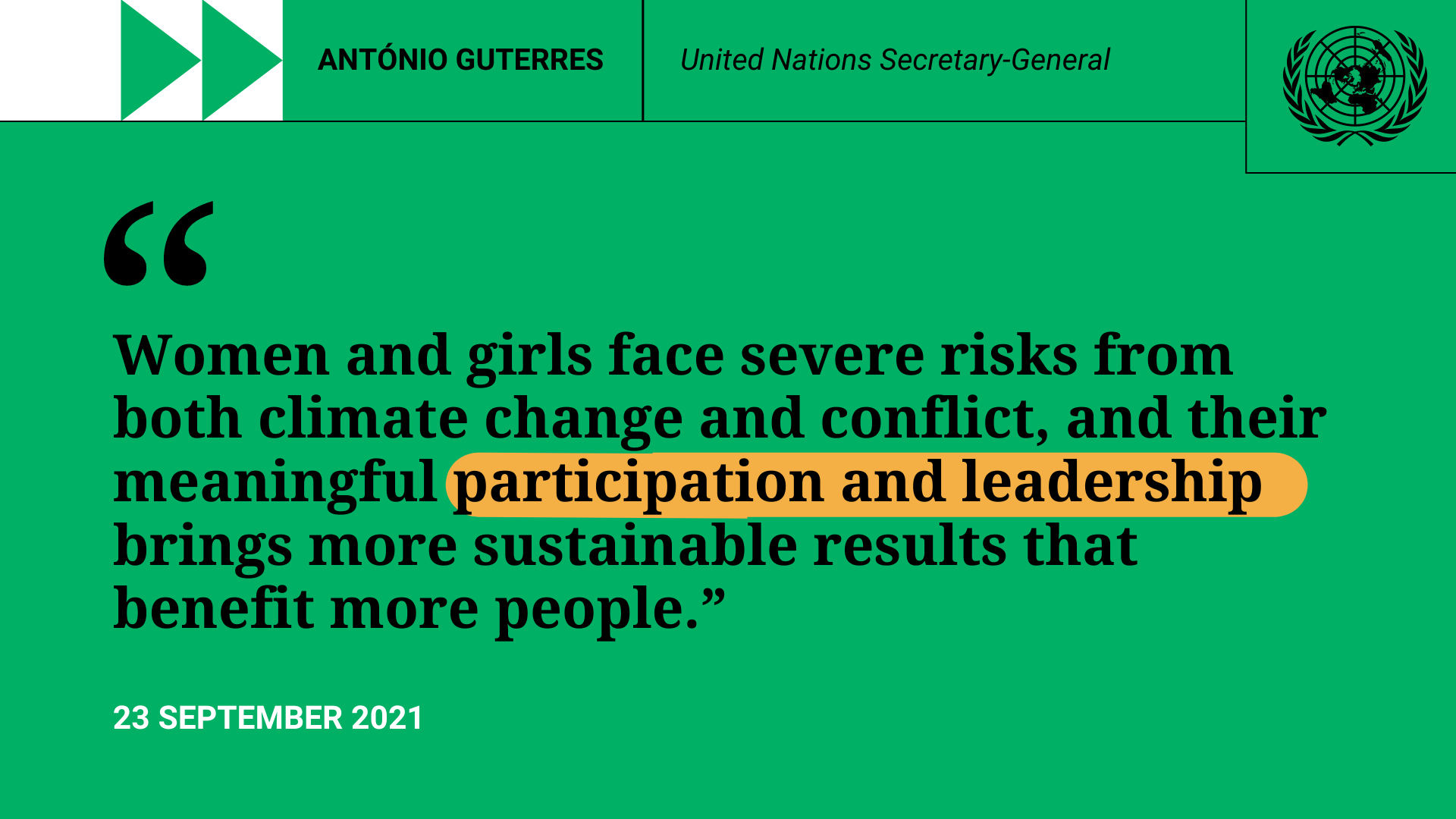
In Somalia, for example, shifting rain patterns due to climate change are leading to water scarcity and contribute to higher rates of clan violence and honor killings, which particularly harm women. Early marriage rates also rise as families cope with livelihood insecurity. And with forced displacements due to climate impacts, rates of sexual violence increase.
Women are often responsible for providing water and fuel for households. When women and girls have to venture further from home in search of water, they are at an increased risk of sexual violence. It also decreases their ability to pursue paid work, as well as opportunities for girls to stay enrolled in school.
In Yemen, another one of the world's most water-scarce and conflict-ridden countries, the UN Peacebuilding Fund has supported initiatives to increase women’s inclusion in local water management and dispute resolution, which has increased their access to natural resources and reduced intercommunal tensions.
Learn more about…
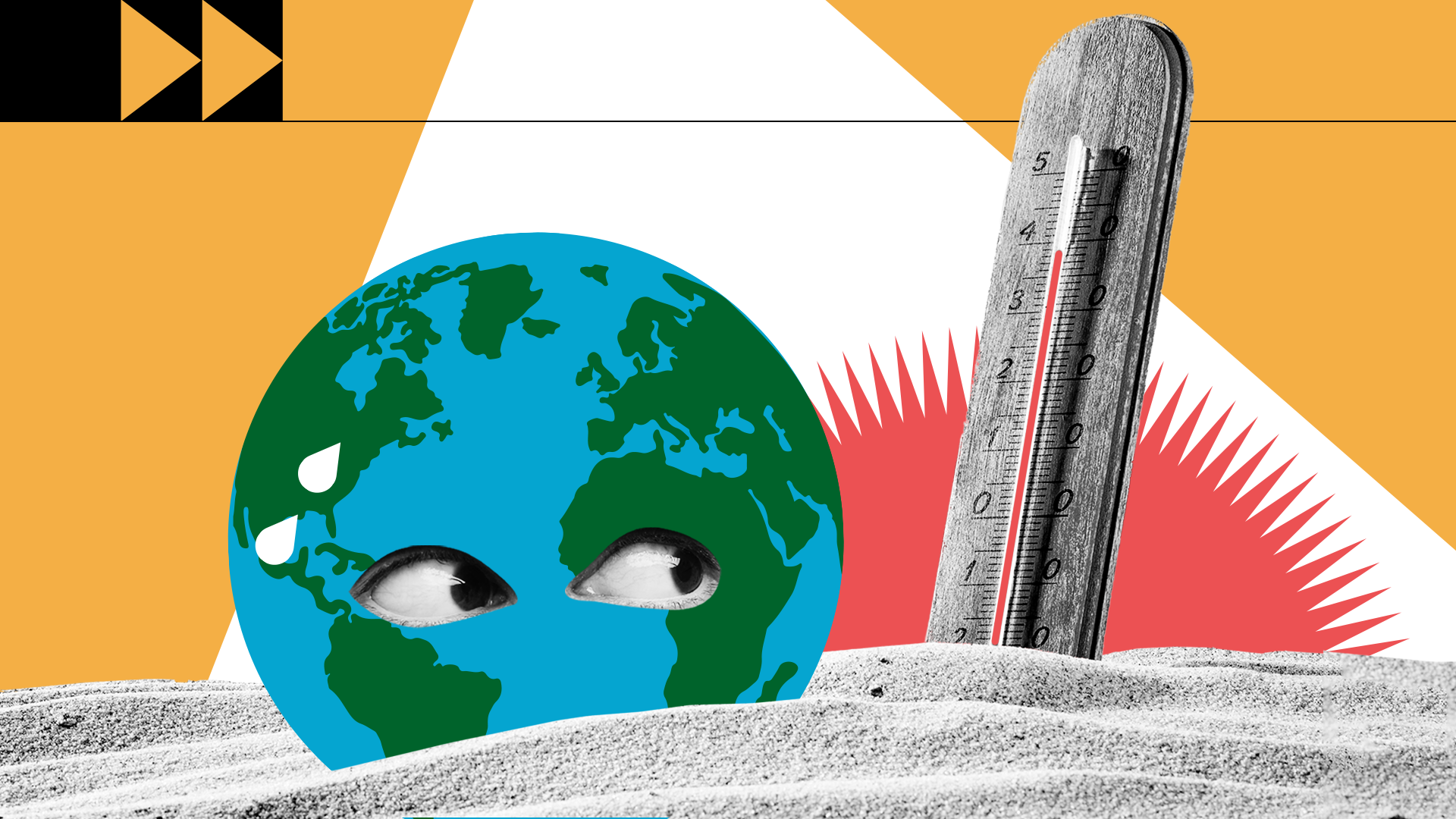
What is climate change?
Our climate 101 offers a quick take on the how and why of climate change. Read more.

Climate Issues
Learn more about how climate change impacts are felt across different sectors and ecosystems.

Adaptation
What is climate adaptation? Why is it so important for every country? Find out how we can protect lives and livelihoods as the climate changes.

Sharan Burrow: Shared prosperity provides hope and security
Sharan Burrow argues that we can solve both the climate crisis and the social crisis, but that requires new commitment to achieving shared prosperity.

The Acceleration Agenda: roadmap for a livable planet
The Secretary-General’s Acceleration Agenda spells out the actions needed from government, business and finance leaders to cut greenhouse gas emissions and protect lives and livelihoods.
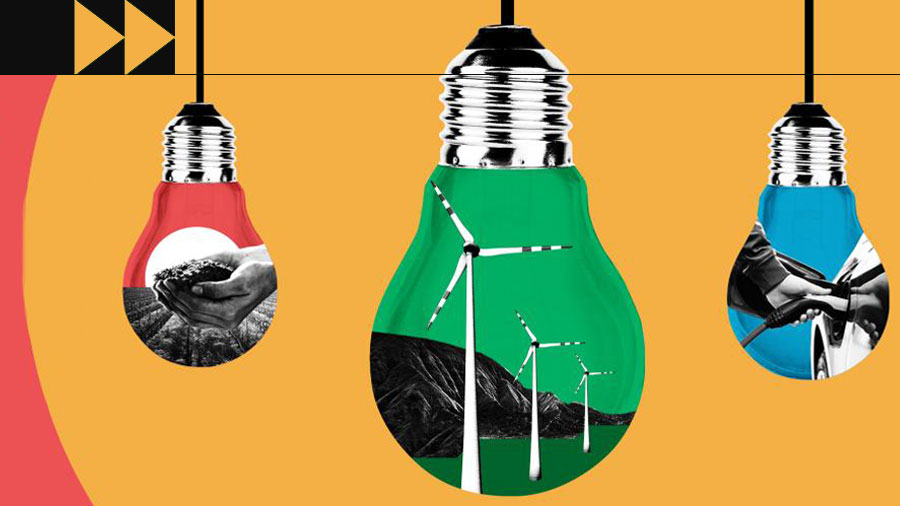
Initiatives for action
Governments, businesses and civil society members are connecting in climate initiatives to speed the pace of climate action. Read more about their global initiatives here.
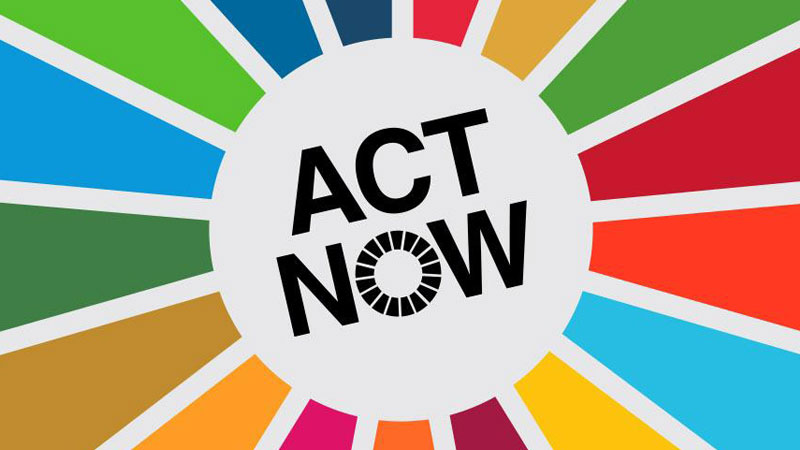
Act for Our Common Future
ActNow is the United Nations campaign to inspire people to act for the Sustainable Development Goals. Learn how you can take action to reduce your impact on the environment and create a healthy planet here.
